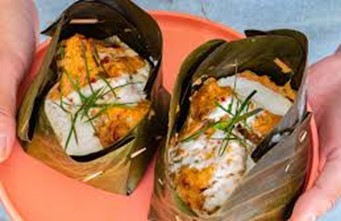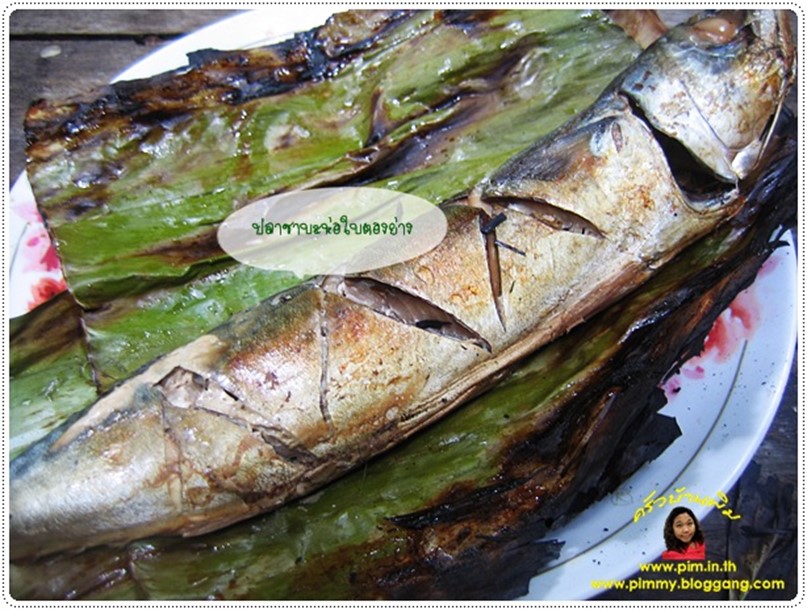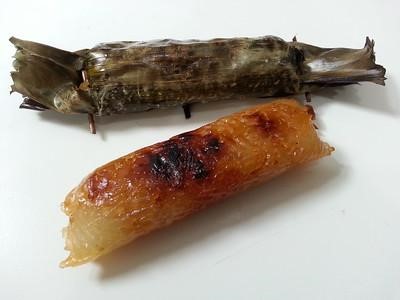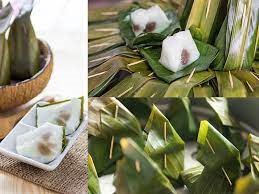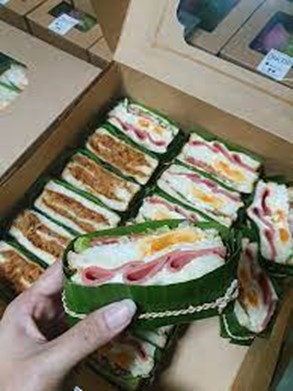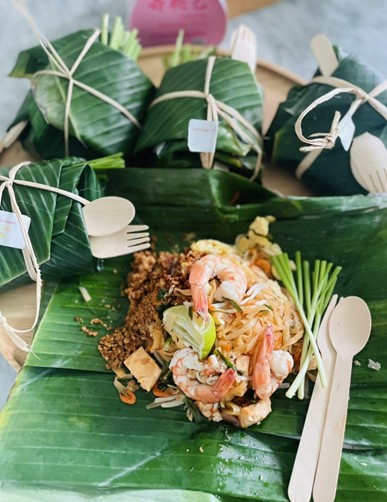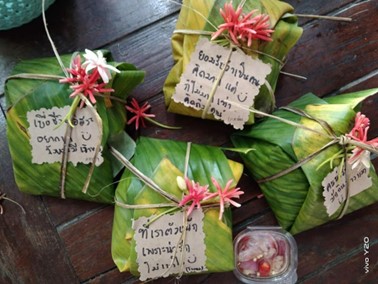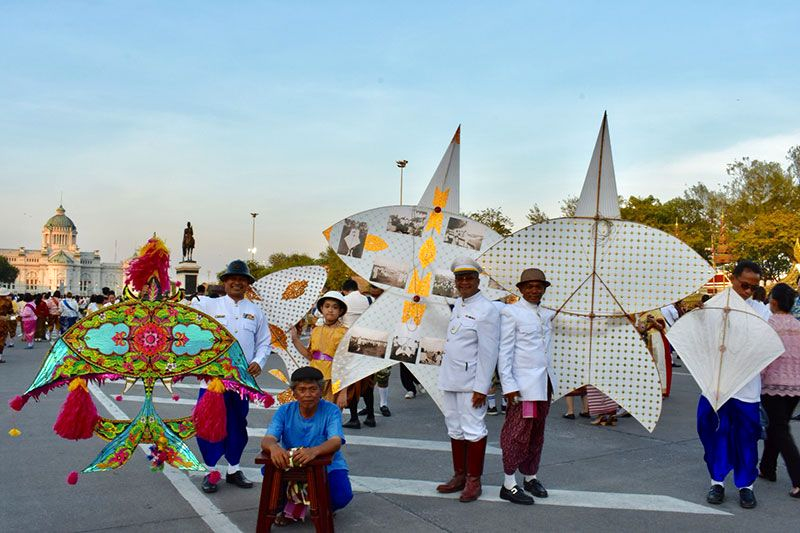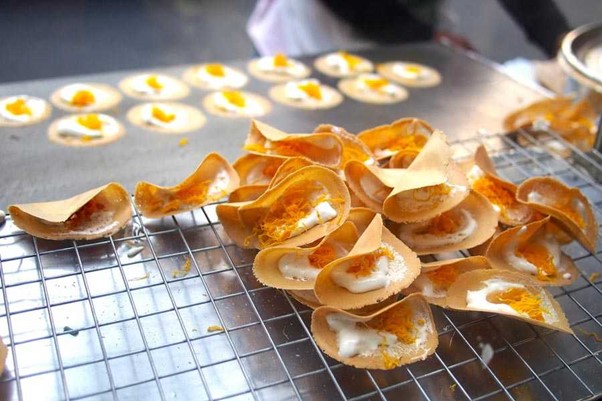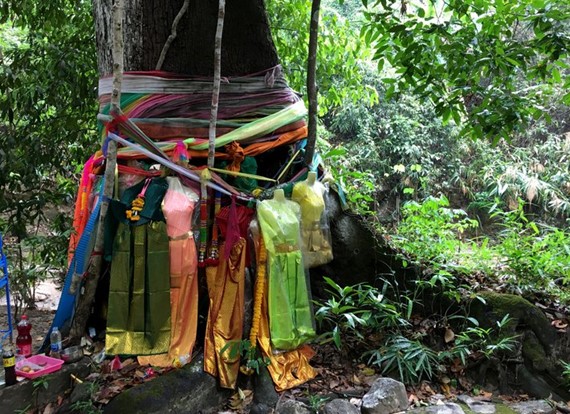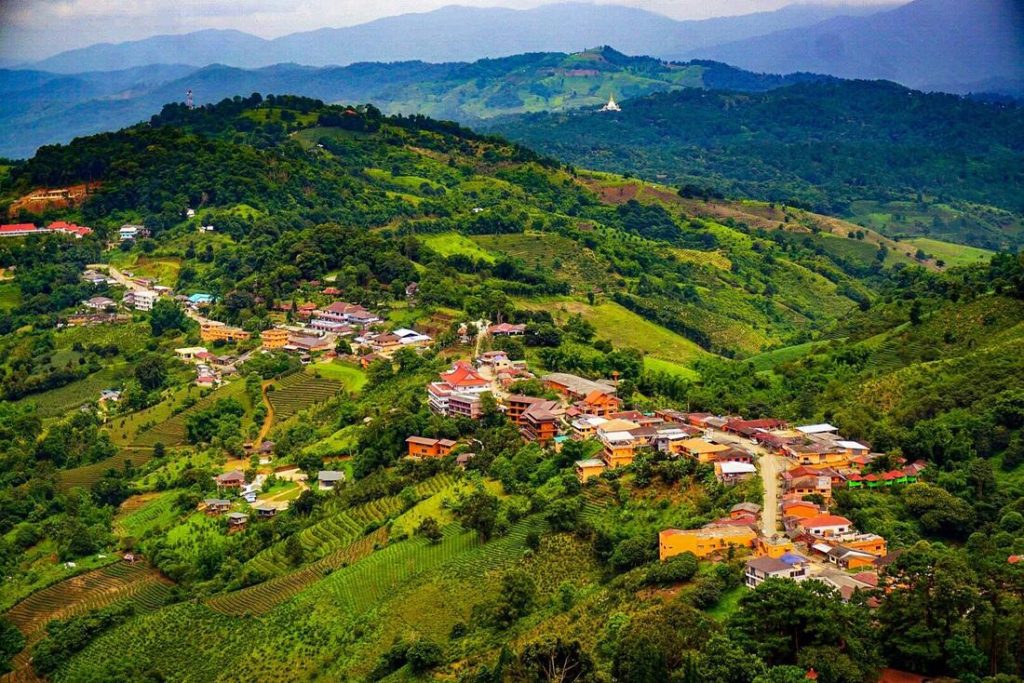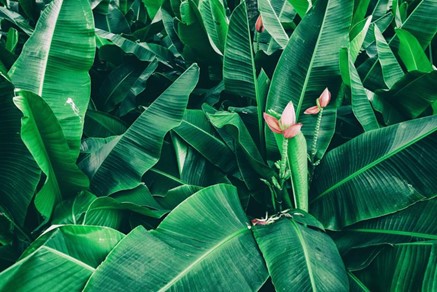
Banana leaves. Photo credit: Sanook
Banana trees thrive in tropical weather, and people in hot climates have long used many parts of the banana plant. The tasty fruit of course, but the flowers, core, fibers, and leaves all are useful in many ways. The banana leaf is widely used in Thai cuisine and among other countries in Southeast Asia. There are dishes that are found across cultures. Recently, I found that Thai Hor-Mok, the steamed fish curry in banana leaf, is similar to Amok, Cambodian fish curry!
In this article I would like to show you some of the many ways we use banana leaf in Thai cuisine. Banana leaves are everywhere in daily life in Thailand, but I had almost forgotten about them while living in the U.S. One day I had a craving for Hor-Mok. I know that to make Hor-Mok I need banana leaves, but I could not just go outside and find some! Fortunately, my husband remembered that the Asian grocery has them in the freezer! So I got them from the store and tried making Hor-Mok for the first time. I was very excited about making Hor-Mok and finding the frozen banana leaves, since they were never frozen in Thailand!
Cambodian Fish Amok – Photo credit: Vice.com
Banana Leaves – for cooking
Thai cuisine uses banana leaves as a cooking container. Banana leaves become soft and flexible after being heated. It can be lightly grilled, boiled, or steamed. We make a cup from banana leaves and use bamboo sticks to hold it together. Raw food is added into the cup mostly for the steaming method. Sometimes we make it as a pocket, adding ingredients on the banana leaf, then folding and bundling with thread. This pocket is good for grilling, searing, or steaming. Banana leaf has a wax on its surface. This wax has its unique smell. When the wax is heated, it acts as an essential oil that adds a wonderful aroma. Grilled fish wrapped in banana leaves is common in Thai cuisine. The smokiness from charcoal and the scent from banana leaves are satisfying and help balance the fishy smell. Banana leaf also helps keeping moisture inside the fish, leaving you tender and juicy meat.
Using banana leaves for grilling. Photo credit: PIM.in.th
Grilled Sweet Sticky Rice. Photo credit: KasetTambon
Traditional Thai dessert – Coconut Custard with Sweet Coconut Filling. Photo credit: ietr.org
Banana Leaves – as a food container
Banana leaves are used as food containers since they are widely available and cheap. Food vendors who use the environment-friendly containers receive compliments from their customers. They gain a good reputation when everyone is concerned about the environment and global warming. When using banana leaves as a food container, they are compostable and easily biodegraded. The other perk of banana leaf containers is no dirty dish to do! On the leaves, there are compounds that inhibit microorganism growth, helping to preserve foods longer. In the past, banana leaves were used only for traditional Thai food and dessert. Right now sandwiches, crepes, and street food of all kinds come in banana leaf containers. They are not only eco-friendly, but their appearance is also appealing to the eco-friendly customers.
Sandwiches in banana leaf. Photo credit: Baosamong
Food vendor used banana leaf wrap for Pad Thai. Photo credit: sooktookkum
Street food vendors start using banana leaf wrap to attract more customers. Photo credit: sentangsedtee
How to store banana leaves
- Rinse and clean the leaves of any dirt or debris left from harvesting.
- Boil for 2-3 minutes to sterilize, keep the color green, and make the leaf more flexible.
- Pat the leaves dry and let them cool.
- If you need them to be stored smaller, carefully fold over the leaves without making creases. Too hard and they will crack!
- Put them in a plastic bag and store in the refrigerator. They could last for 7-10 days. If you keep them in the freezer, they will stay green for a long time.
Reference:
https://www.matichonacademy.com/content/article_33075
https://www.sanook.com/women/228317/
Article by
All photos Copyright 2023 Premmarin Milindasuta All Rights Reserved


